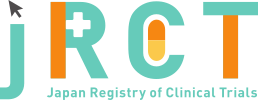臨床研究等提出・公開システム
|
Sept. 07, 2018 |
|
|
July. 31, 2021 |
|
|
jRCTs031180017 |
Studies on the utility of simultaneous-multi-slice acquisition (SMS) dynamic susceptibility contrast-enhanced (DSC)MRI for the occulusive cerebrobascular disease (SMS DSC-MRI study for the occulusive cerebrobascular disease) |
|
Studies on the utility of simultaneous-multi-slice acquisition (SMS) dynamic susceptibility contrast-enhanced (DSC)MRI for the occulusive cerebrobascular disease (Studies on the utility of simultaneous-multi-slice acquisition (SMS) dynamic susceptibility contrast-enhanced (DSC)MRI for the occulusive cerebrobascular disease) |
|
Dec. 25, 2019 |
|
37 |
|
Study participants: Patients with moyamoya disease Patients with carotid artery stenosis Number 29 8 Age (mean+-SD; range) 43.1+- 16.6; 20-69 years 76.1+-2.9; 72-82 years Sex (Male/Female) 7/22 6/2 Body weight (mean+-SD) 59.8+-11.1 kg 58.9+-13.0 kg eGFR (mean+-SD/min/1.73 m2) 23.3+-4.7 mL 66.3+-5.6 mL Diseases history (n): Peripheral artery disease 0 1 Hypertension 9 2 Diabetes 1 2 Dyslipidemia 6 5 Long-term smoking history (n) 1 2 Abbreviations: eGFR, estimated glomerular filtration rate: SD, standard deviation |
|
Prior to the examination, thirty-seven participants were enrolled and assessed for eligibility. All participants were eligible and completed the analysis for moyamoya disease (n = 29) and internal carotid artery stenosis (n = 8). |
|
Exacerbation of paralysis due to acute cerebral infarction, which has been presented before the examination, was observed in 1 patient with carotid artery stenosis 3 hours after the procedure of SMS-DSC MRI. To note, the contrast-enhanced MRI was performed within the scope of routine clinical practice and there was no direct connection between the adverse event and this study. |
|
[Principle evaluation] The perfusion parameters obtained using SMS-DSC MRI with high-time resolution (0.5 s) and lower time-resolution (2.0 s) were compared in patients with moyamoya disease. As results, high-time resolution data showed significantly higher cerebral blood flow (CBF) and cerebral blood volume (CBV) in the anterior and posterior cerebral circulations and blood flow delay region (defined by TMAX 6s or less) regions compared to lower time resolution data. [Secondary evaluation] PET imaging was performed in 20 of 23 patients with moyamoya disease from Tokyo Medical and Dental University. In a qualitative analysis, an increase of CBV measured by SMS DSC-MRI was well correlated with that measured by PET imaging. Moreover, an increase of MTT was well associated with increased OEF assessed by PET imaging. Sixteen of 20 patients underwent revascularization on the basis of the results of PET imaging. |
|
Perfusion parameters such as CBF or CBV are essential in the evaluation of moyamoya disease. Our study using a high temporal resolution imaging technique demonstrated significant changes in cerebral blood flow and volume when compared with the conventional method. Moreover, perfusion metrics obtained from this technique correlated well with the perfusion and metabolic metrics measured by PET imaging. These results suggest the usefulness of high temporal resolution DSC-MRI imaging in the clinical setting. |
|
July. 31, 2021 |
|
July. 31, 2021 |
|
Undecided |
|
undecided |
|
https://jrct.mhlw.go.jp/latest-detail/jRCTs031180017 |
Aoki Shigeki |
||
Juntendo University School of Medicine |
||
2-1-1 Hongo, Bunkyoku, Tokyo, 113-8421, Japan |
||
+81-3-5802-1230 |
||
saoki@juntendo.ac.jp |
||
Aoki Shigeki |
||
Department of Radiology, Juntendo University School of Medicine |
||
2-1-1 Hongo, Bunkyoku, Tokyo, 113-8421, Japan |
||
+81-3-5802-1230 |
||
saoki@juntendo.ac.jp |
Complete |
Aug. 01, 2018 |
||
| Aug. 01, 2018 | ||
| 50 | ||
Interventional |
||
single arm study |
||
open(masking not used) |
||
uncontrolled control |
||
single assignment |
||
diagnostic purpose |
||
patients with occlusive cerebrovascular disease scheduled to undergo perfusion MRI examination. |
||
contraindications to MRI examination or gadolinium contrast medium |
||
| 20age old over | ||
| No limit | ||
Both |
||
carotid artery stenosis, moyamoya disease |
||
Intravenous administration of gadobutrol (Gadovist, Bayer Schering Pharma, Berlin, Germany) is administered in the supine position, and high speed DSC-MRI scan by using SMS acquisition (temporal resolution of 0.5s) is carried out at the same time as injection of the contrast agent with an acquisition time of 70sec. The quantitative and qualitative comparison between reference data set (0.5s) and additional data sets with temporal resolution of 1.0s, 1.5s, and 2.0s generated from the reference data set, is performed. |
||
To compare the perfusion parameters including CBF, CBV, MTT, TTP, and Tmax between SMS DSC-MRI and conventional DSC-MRI in patients with occlusive cerebrovascular disease. |
||
To evaluate the relationship between CBF map calculated by using DSC-MRI and that by SPECT, as well as to compare the accuracy of correlation to SPECT between SMS DSC-MRI and conventional DSC-MRI. |
||
| Bayer Yakuhin, Ltd | |
| Applicable |
| Bayer Yakuhin, Ltd | |
| Applicable |
| Juntendo Hospital Certified Review Board | |
| 3-1-3, Hongo, Bunkyoku, Tokyo | |
+81-3-5802-1584 |
|
| kenkyu5858@juntendo.ac.jp | |
| Approval | |
Aug. 07, 2018 |
| UMIN000028938 | |
| UMIN-CTR |
none |
